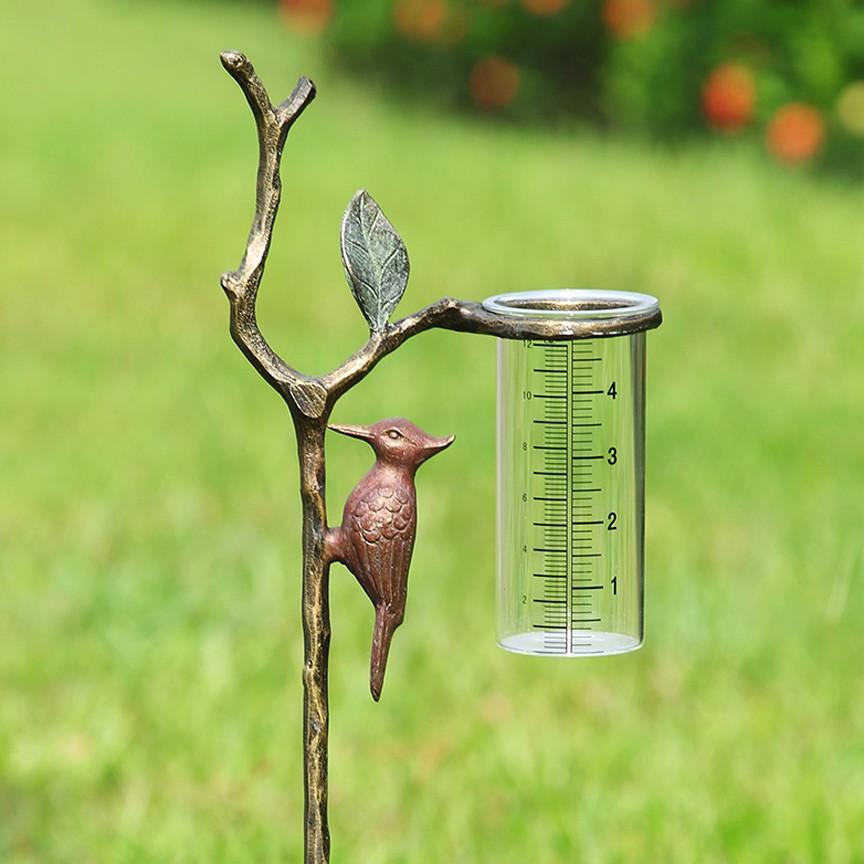Unveiling the Scientific Research Behind Rain Gauges: Just How These Devices Play an Essential Role in Climate Research and Ecological Monitoring
Rainfall gauges, apparently simple gadgets, hold an extensive relevance in the world of climate research study and environmental monitoring. As we peel back the layers of this scientific shroud surrounding rainfall determines, we reveal a globe where precision, data accuracy, and meticulous observation converge to introduce a much deeper understanding of our altering climate and its effect on the earth.
Relevance of Rainfall Scales
Rainfall determines play an important function in tracking and determining precipitation levels, providing essential information for environment study and evaluation. These gadgets are essential in quantifying the quantity of rainfall that takes place in a specific area over a specific period. By gauging and accumulating rainwater, rainfall assesses offer beneficial insights right into the distribution and strength of precipitation, assisting meteorologists, hydrologists, and climatologists in recognizing weather patterns and trends.
One of the key reasons rain determines are important is their ability to supply local and precise information. Unlike satellite or radar-based measurements, which provide wider observations, rain evaluates deal accurate details particular to the area where they are placed. This local information is important for numerous applications, including flood projecting, drought tracking, and water source management. In addition, long-term information collected from rain assesses helps in assessing climate adjustment effects and patterns, adding substantially to scientific research study and decision-making procedures. Essentially, rain determines act as necessary devices in the field of meteorology and environmental scientific research, playing a vital function in progressing our understanding of climate and climate dynamics.
Kinds Of Rain Gauges

Capability and Procedure
In the world of climate study and atmospheric studies, the performance of rain gauges lies in their detailed performance and accurate operational systems. Rain assesses are created to accurately determine the amount of rainfall that falls over a specific area throughout a set period.
The functionality of rainfall evaluates is based on the principle of gauging and gathering rain in a standardized fashion. This gathered information is important for understanding regional climate patterns, tracking long-term environment fads, and examining ecological impacts. To make sure accurate measurements, rainfall evaluates demand to be strategically positioned in open areas far from obstructions such as buildings or trees that could disrupt the collection process.
The operational element of rainfall assesses includes normal maintenance to stop particles build-up, calibration checks to preserve dimension accuracy, and data recording for analysis (rain gauge). Overall, the capability and operation of rain assesses are essential for collecting trustworthy rainfall information vital to climate research study and environmental tracking
Duty in Environment Study
Offered the crucial significance of precise rainfall measurements in comprehending weather condition patterns and ecological impacts, the role of rain determines in environment study is important. Rainfall gauges give essential information for climate research by quantifying the amount of precipitation that tips over a details location throughout a provided period. This data is crucial for checking long-term patterns in precipitation patterns, assessing the effect of environment modification on rains circulation, and enhancing environment models.

Environment scientists use data accumulated from rain gauges to assess variants in precipitation levels, identify local climate fads, and evaluate the effectiveness of water resource monitoring methods. By comparing historical rainfall information with present dimensions, researchers can identify changes in precipitation patterns, such as adjustments in the frequency or intensity of rainfall occasions. This information is vital for understanding how environment change is influencing precipitation dynamics and can help policymakers make informed choices relating to adaptation and mitigation strategies.
Applications in Ecological Tracking

In flooding forecasting, rain scale data helps to track rains strength and distribution, permitting authorities to release prompt cautions and take necessary procedures to mitigate flood dangers (rain gauge). Drought monitoring depends on rain gauge data to assess dampness levels in the dirt and track rainfall shortages, aiding in the identification of drought-prone areas and the execution of dry spell response methods
Additionally, rain scale information plays an important duty in water resource monitoring by providing details on water availability and use patterns. This data is utilized to make informed choices relating to water allowance, conservation measures, and lasting water resource planning. Furthermore, in agriculture, rainfall scale information aids farmers in optimizing irrigation timetables, crop option, and total ranch management practices based upon regional precipitation patterns. On the whole, rainfall evaluates are indispensable tools in environmental tracking, using important insights that add to notified decision-making and sustainable resource management.
Verdict
To conclude, rain determines are vital devices for determining precipitation, offering valuable information for climate research study and ecological monitoring. With various types and capabilities, rain assesses play an important role in recognizing precipitation patterns and their effect on the atmosphere. By precisely determining rainfall, these gadgets add to the advancement of clinical understanding and help in making educated decisions pertaining to water resource monitoring and disaster readiness.
Rain gauges play an essential role in monitoring and determining precipitation degrees, supplying vital data for environment study and analysis. The standard rain gauge, understood as the "tipping bucket" scale, is one of the most frequently made use of devices. Ultrasonic rain gauges use noise waves to discover the existence of rainfall, giving real-time information on rainfall levels.Climate scientists make use of data collected from rain gauges to analyze variants in rainfall levels, recognize regional environment trends, and examine article source the performance of water source administration click site strategies.In final thought, rainfall assesses are important devices for determining precipitation, supplying beneficial data for climate study and ecological monitoring.